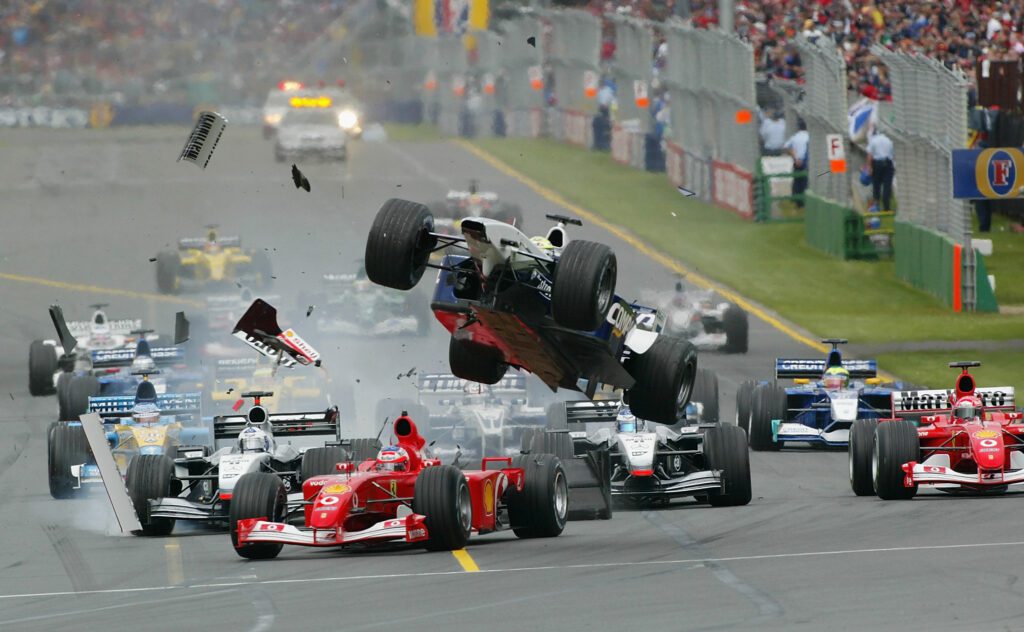A new report from the ABS reveals nearly 3 million Australians over the age of 18 have experienced sexual violence, and that the most likely perpetrator of sexual assault against women was their intimate partner. While helping women spot the early signs of coercive control in their relationships-before it turns into physical abuse-is important, it’s equally as critical for men to be able to identify if they are engaging in coercive control without realising it.
Unfortunately, coercive control can be a lot harder to identify than the more obvious forms of domestic violence, like physical abuse – things like the early ‘love-bombing’ stages of a relationship these behaviours can be positioned as deep love, or concern over safety and will then escalate into something more sinister over time
A new podcast, The Trap, takes a deep dive into coercive control, domestic abuse and the systems in place that protect victims and enable perpetrators. So to find out more, we spoke to Men’s Behavioural Change Specialist Phil Jones, who features in episode 3 of The Trap, to learn more about what men can do to identify it in themselves.
What is coercive control?
Coercive control is about how we use power – misusing power to achieve something. The idea of having ‘power over’ versus ‘power with’ is something that the men I work with really struggle to grasp when they join my program. We can think about power the same way we might about privilege. One of the privileges we have is that we don’t have to know that we’re privileged. Similarly, we don’t always know that we have power. What’s interesting and complicated about coercive control is that most people who perpetuate it do so because they feel powerless, but feeling powerless and being powerless aren’t the same thing.
Coercive control can be difficult to define, because what one person considers control might be interpreted differently by someone else. Ultimately though, if someone is feeling abused, that’s what counts.
When an abuser is violent or verbally abusive, they’re effectively saying to their victim, “I can’t handle you bringing something to me that’s confrontational or challenges me. I don’t have the fortitude, I haven’t learnt the skills to manage this, so instead of stepping out of what I know and learning to deal with this, I’m going to control what I can and alter your behaviour.”
What are the behaviours to look out for?
In men’s behaviour change work, we have a tendency to set parameters and say, “this is what’s going on, therefore it’s called this”, but this can be problematic because each individual person and each practitioner has a different perception, so the parameters we try and fit people into don’t always work very well.
A man’s attitude to his behaviour is a helpful indicator. For example, if his attitude is “she’s doing the wrong thing and therefore I need to make her different”, or he’s always raising his voice and saying, “she gives as good as she gets”, they’re justifying the behaviour and not carrying a level of consciousness of what they’re doing. That doesn’t excuse the behaviour by any means, but this is where labelling specific behaviours one way or another can be problematic, because we’re trying to reach people whose behaviour always goes back to a justification. Removing these justifications takes a very long time.
If we want to alert someone to their misuse of power, there are some questions they need to ask themselves – “Am I ashamed of myself?”, “Do I feel less than because of the way I behave?”, “Do I justify my behaviour?”, is a common thought “If she was different, I’d be ok?” We need men to start asking themselves these questions, and if the answer is yes, I would suggest seeking help.
What should you do if you start noticing these behaviours?
If you find you’re justifying behaviours your partner or others have identified as abusive or problematic, or you don’t perceive situations they’re describing the way that they do, you should seek someone out to speak with. This might be a doctor, a counsellor, or a men’s behaviour change program provider, which exist across the country.
In a men’s behaviour change programs like the one I run, we try to unpack what’s happening when a man is engaging in abusive behaviour. To borrow a great analogy from abuse and trauma expert Maggie Woodhead, there’s three things happening when the abuse is taking place — internally he’s getting smaller and becoming increasingly frightened, he’s effectively getting more desperate. At the same time externally, he’s becoming bigger, more aggressive and more dangerous. The third thing that’s happening is the woman’s terrifying experience. You can think about these elements as a Venn diagram, where the three circles overlap in the middle because they’re all happening simultaneously.
Our line of work is a tough one, because most of the men in our programs are only conscious of what’s happening for them internally, and to be totally honest, there are very few people who are interested in hearing his internal experience because of what he is doing externally. But in order to support him to change his abusive behaviour, we do need to consider what matters to him and what’s going on inside. So effectively, in behaviour change work like mine, we stand at the intersection of those three circles and hold a space for his experience. We don’t collude or agree with him, we don’t allow him to justify the way he’s acting, but we also don’t vilify him. Because taking either of those extremes will only further embed his behaviours. We have to find a place somewhere in the middle. What’s going to help this man is someone saying, “I hear what you’re saying, and also how you impacted her was horrific. How you behaved externally was so totally disconnected from how you were feeling internally. What we need to work out is how we can help you meet your own needs, so that you don’t demand that she do it for you.” This can take years and years of work, because ultimately, we’re working to undo years of learnt behaviour.
















